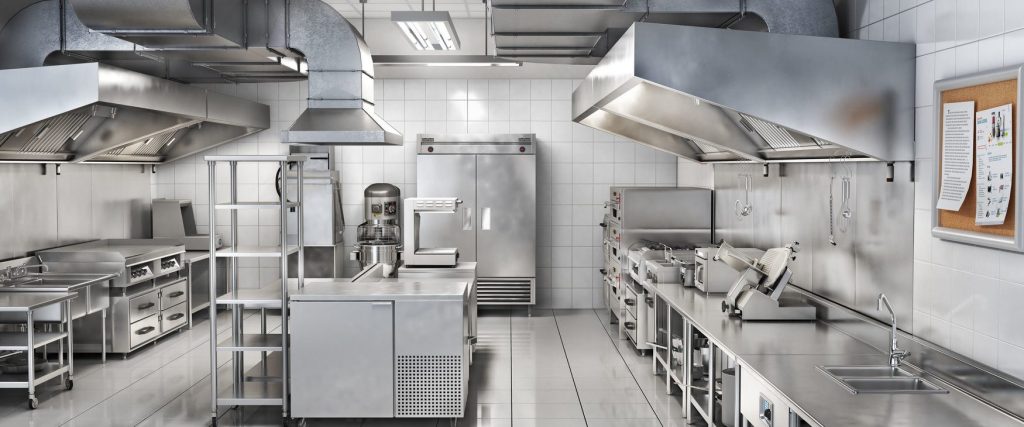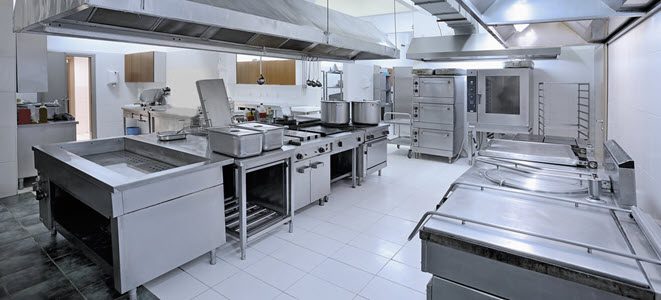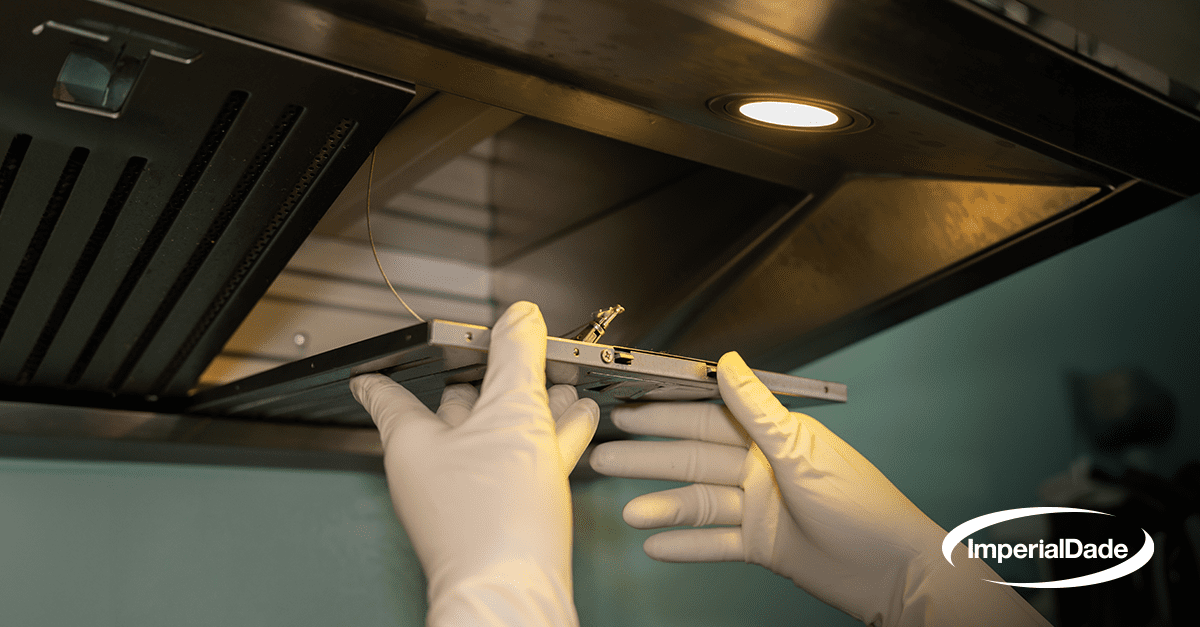In the fast-paced environment of commercial kitchens, a hidden problem silently affects their indoor air quality (IAQ).
Amid the hustle of prepping meals and cleaning cookware, inadequate ventilation systems become an unseen threat, impacting the well-being of kitchen staff and the satisfaction of customers.
Commercial kitchens in particular have a difficult time maintaining good IAQ because the ventilation systems, a combination of HVAC and range hoods, constantly deal with an ever increasing amount of airflow due to the rush of outdoor air whenever a patron enters the building.
The constant influx of air puts undue stress on the ventilation systems, making them work overtime to balance air quality in the kitchen and restaurant at large. As a result of the imbalance this generates, cooks, servers and guests alike bear the burden of suboptimal air quality, affecting not only physical comfort but also the overall dining experience.
However, the consequences extend beyond discomfort. Lingering pollutants in the air can lead to serious health conditions for all who work in the kitchen.
This article delves into the challenges posed by poor commercial IAQ, aiming to highlight different methods for measuring and improving IAQ. It starts by understanding how poor commercial IAQ can affect kitchen staff and guests.
Pro Tip: IAQ is the quality of the air in and around a building. Poor IAQ has been shown to negatively affect building occupants, while good IAQ has been linked to positive effects.
What Does Poor IAQ Mean?
In the high-temperature, fast-paced environment of commercial kitchens, maintaining good IAQ is critical to the performance and well-being of employees.
The repercussions of poor commercial IAQ extend into the daily lives of kitchen staff, with documented links to headaches, reduced concentration, and, in more severe cases, long-term health conditions. In a workspace where precision and alertness are important, these adverse effects can have a very real impact on the quality of service and the safety of food preparation.
The impact isn’t confined to the kitchen staff alone. Guests may also find themselves at the mercy of poor commercial IAQ. Irritation of the eyes, nose, and mouth, coupled with symptoms like dizziness and fatigue, can affect guests. That means IAQ isn’t just a matter of employee welfare but also directly influences customer satisfaction.
On the other hand, maintaining good IAQ in the foodservice industry has a number of benefits. Studies suggest a positive correlation between good IAQ and a reduction in sick time taken by employees. A healthy and comfortable work environment not only boosts morale but also contributes to increased productivity among staff.
However, achieving and sustaining good IAQ in the foodservice industry is no easy feat. Commercial kitchens must assess and address poor commercial IAQ head-on if they wish to foster a healthy and productive culinary environment.
How to Measure IAQ
When it comes to maintaining good air quality, proactive monitoring is a crucial strategy. There are two key tools for proactively monitoring and managing IAQ: in-duct IAQ systems and hygrometers.
In-Duct IAQ Systems
These systems offer real-time insights into critical air quality parameters.
From particulate matter and volatile organic compounds to carbon dioxide and carbon monoxide levels, the in-duct IAQ systems provide a comprehensive understanding of the kitchen’s atmospheric composition.
Real-time monitoring allows for immediate responses to fluctuations in air quality, enabling kitchen staff to pinpoint and address potential issues promptly. The data that these IAQ systems provide enable kitchens to make targeted actions against poor commercial IAQ, ensuring that the air within the kitchen is consistently conducive to the well-being of both staff and customers.
Hygrometers
Focused on tracking humidity levels, these devices are a key component in preventing the growth and dissemination of airborne pollutants.
Elevated humidity levels can foster conditions ideal for the growth of mold, mildew, and other contaminants, contributing to poor commercial IAQ and potential health hazards.
By providing real-time humidity data, hygrometers empower kitchen staff to take preventive measures. Whether it’s adjusting ventilation systems, using dehumidifiers, or implementing targeted cleaning protocols, the information provided by hygrometers serves as a proactive tool in the battle against poor commercial IAQ.
How to Improve IAQ
Now that you have a better understanding of poor commercial IAQ, its effects, and how to assess it, it’s time to explore practical steps for improving IAQ.
From maintaining HVAC systems to optimizing range hood performance and making thoughtful choices in appliances, these four hands-on approaches aim to create a healthier and more pleasant atmosphere for both kitchen staff and patrons:
- HVAC System Maintenance
- Optimizing Range Hood Performance
- Appliance Considerations
- Routine Cleaning Procedures
Let’s navigate through these approaches to see how each one can contribute to an improved IAQ.
1. HVAC System Maintenance
Ensuring the longevity and efficiency of your HVAC system involves regular check-ups.
Schedule inspections at least twice a year to guarantee its optimal performance. If you notice a large accumulation of dust or debris within the ducts, it’s crucial that you reach out to a professional service for a thorough cleaning. This not only helps to maintain proper airflow but also prevents the circulation of pollutants, contributing to a healthier kitchen environment.
Additionally, consider upgrading your system’s filters to advanced options like High-Efficiency Particulate Air (HEPA) or Minimum Efficiency Reporting Value 13 (MERV-13). These filters excel at trapping particulate matter, significantly enhancing the system’s ability to capture pollutants effectively.
Pro Tip: New to the world of advanced filters? Check out our guide on What is a HEPA Filter?
2. Optimizing Range Hood Performance
Now, let’s talk about maximizing the efficiency of your range hood.

Proper placement of cooking appliances beneath the hood is essential for optimal hood performance. Paying attention to overhangs in your kitchen setup is equally important, as these details enhance the range hood’s ability to capture and filter out cooking emissions effectively. Aim to have at least 3 inches of overhang for the best results.
Additionally, investing in perforated diffusers may seem like a small detail, but they play a significant role in trapping and minimizing the release of cooking emissions.
3. Appliance Considerations
Exploring different appliance options has the potential to bring about significant improvements in IAQ.
Consider transitioning from gas to electric appliances, particularly when it comes to induction cookers. Beyond the speedier cooking times, these appliances produce fewer pollutants, positively impacting the overall air quality in your kitchen.
Another impactful decision lies in the choice of cooking oils. Opting for oils with lower emission levels, such as canola or vegetable oil, is a simple yet effective choice that contributes to the overarching goal of improving IAQ.
4. Routine Cleaning Procedures
Beyond mechanical optimizations and appliance considerations, the significance of routine cleaning procedures cannot be overstated.

Daily sweeping and mopping with the right floor cleaner is integral to removing grease and particles from the kitchen floor. At the same time, the often-overlooked areas, like floor mats and drains, require regular cleaning and maintenance. Routine cleaning isn’t just about keeping up appearances, rather it’s a critical step towards preventing the accumulation of pollutants and odors. Lastly, implementing a consistent sanitization and disinfection schedule for kitchen surfaces, cutting boards, and utensils further reduces the risk of bacterial growth.
By performing these tasks on schedule, you actively minimize airborne contaminants and foster a healthier culinary workspace.
Final Thoughts
In the rigorous and high-paced environment of commercial kitchens, prioritizing IAQ emerges as an important but often overlooked imperative.
While IAQ may be a silent threat, we’ve discussed how you’re able to shed light on and monitor the issue through the use of in-duct IAQ systems and hygrometers. By actively monitoring IAQ, you’ll be better equipped to use the methods for improving IAQ that we’ve covered in this article.
Regular maintenance of HVAC systems, meticulous optimization of range hood performance, thoughtful appliance choices, and routine cleaning procedures collectively form the foundation for a healthier kitchen environment. These practical steps not only enhance the well-being of your culinary staff but also contribute to an elevated dining experience for your customers.
For comprehensive sanitization services and expert guidance on IAQ management tailored to your unique needs, consider reaching out to an Imperial Dade facility near you.
Through collaboration with our highly experienced foodservice industry experts, your commercial kitchen can foster a space that’s both healthier and more comfortable for staff and customers and also serves as a testament to the establishment’s commitment to excellence and well-being.
Contact an Imperial Dade representative for a free consultation today, and get started on your path towards good commercial IAQ.
Check Out These Related Articles and Videos
- What is IAQ (Indoor Air Quality?)
- What are the Most Common Air Pollutants in a Facility?
- Why Indoor Air Quality is Important and Ways you can Improve it
- How to Improve Indoor Air Quality
- What is a HEPA Filter? | Imperial Dade
- How to Assess & Improve IAQ in a Restaurant
- Commercial Cleaning Best Practices: 4 Ways to Boost Your Team’s Productivity
- Top Alternative to Metered Aerosol Dispensers
